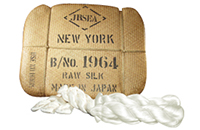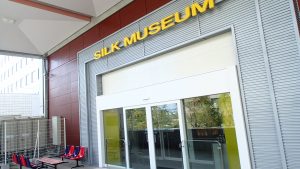The Role of Silk in Yokohama
Following the opening of Yokohama’s port to the rest of the world in 1859, numerous foreign ships began making their way into the city’s port, leading to increasing numbers of resident foreign traders and the establishment of Japanese trading companies.
foreign ships began making their way into the city’s port, leading to increasing numbers of resident foreign traders and the establishment of Japanese trading companies.
From the time of the port opening to the early Showa Period (which began in 1926), raw silk served as a major export product for Japan via these local traders.
Raw silk was transported by land and water from all over Japan to Yokohama for export, and in 1909 Japan became the world’s biggest exporter of raw silk.
Sericulture and silk production played an important role in the nation’s economy and contributed greatly to Japan’s modernization.
Yokohama itself, the city of silk, disseminated its foreign cultural influences to other parts of the country.
About Silk Museum
The Silk Museum opened in March, 1959 as the centennial project  of the Yokohama Port Opening through the united efforts of Kanagawa Prefecture, Yokohama City and related industries. It is located at the former Jardine Matheson & Co. (English House No.1), an English trading company, which brought prosperity to Yokohama from the silk trade in the first years of the newly-opened Yokohama Port.
of the Yokohama Port Opening through the united efforts of Kanagawa Prefecture, Yokohama City and related industries. It is located at the former Jardine Matheson & Co. (English House No.1), an English trading company, which brought prosperity to Yokohama from the silk trade in the first years of the newly-opened Yokohama Port.
Not only you can learn about the silk production process from sericulture to filature, dyeing and weaving, but also the history of silk clothing including fashions from those days to the modern era. The museum also exhibits changes in the silk industry as well as beautiful art works of dyed and woven silk and modern silk products from both Japanese and western styles. It is one of the few museums in the world where you can look at silk and learn all about it. We hope you enjoy your visit.

